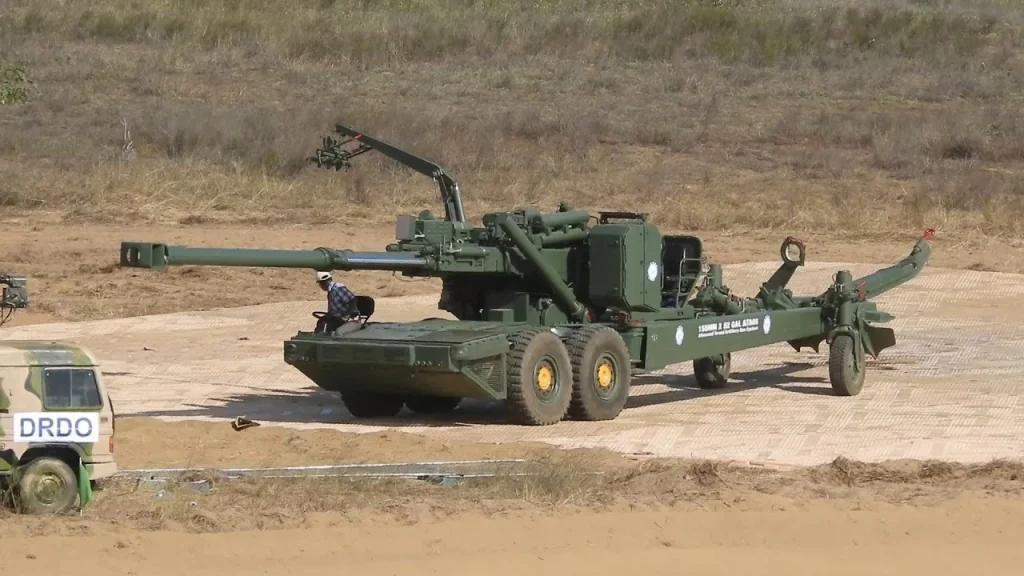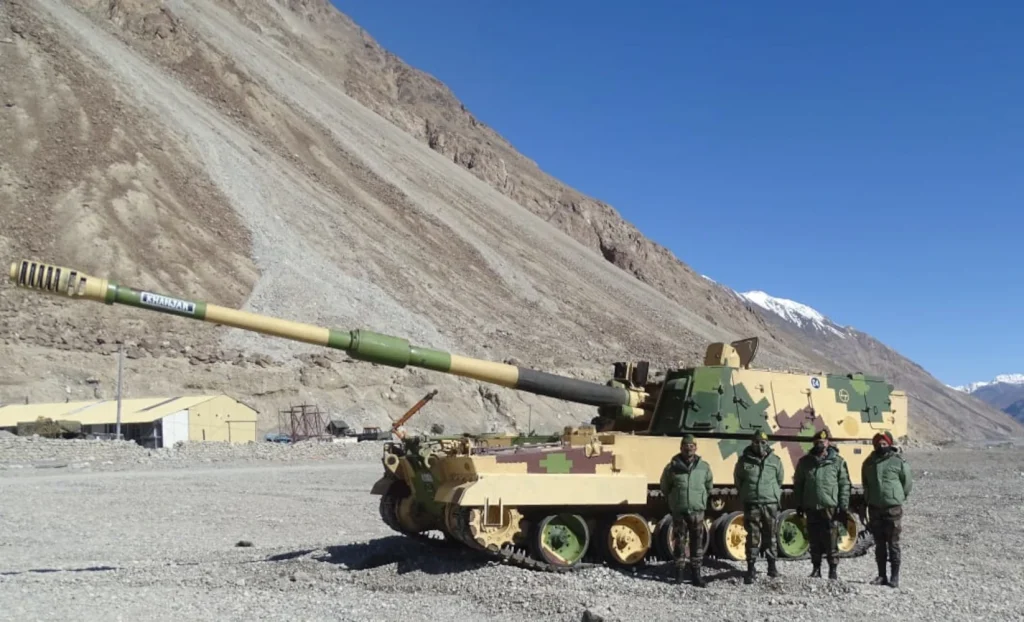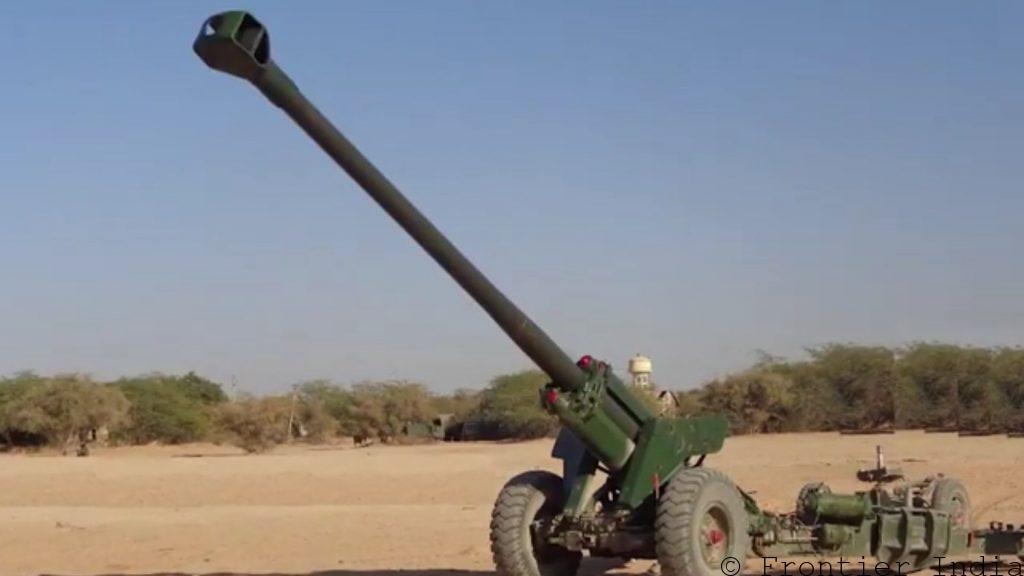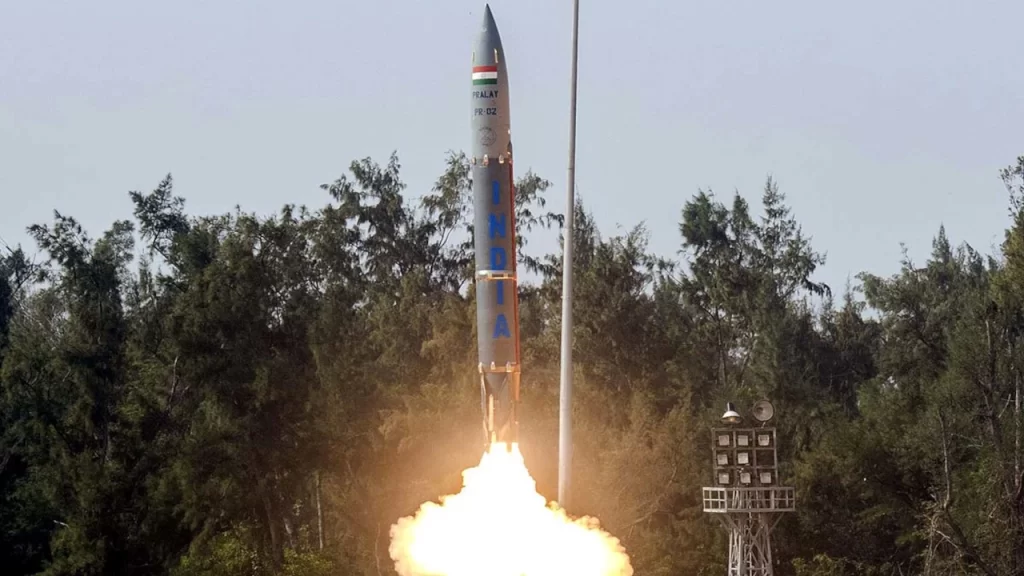As part of its efforts to become more modern, the Indian Army has started a huge buying spree for advanced artillery, missiles and monitoring technology systems. Missile capabilities, towed artillery gun systems, mounted gun systems, and self-propelled artillery are all part of the acquisition. It focuses on improving mobility, accuracy, range, quick hits, and survival.
Following an analysis of what the artillery regiments need to be successful on the battlefield, a five-pronged plan has been created. The suggested plan includes giving each regiment high-tech 155mm artillery gun systems, supplying deadly ammunition and missiles and rockets with longer ranges and better accuracy, changing the way surveillance and target acquisition units are set up, and shortening the sensor-to-shooter loop to make it easier to find and destroy targets quickly.

The Indian Army plans to upgrade its artillery to medium 155mm gun systems by 2042. Ordnance with greater range, fire volume, and accuracy has been a priority for international militaries. According to a defence ministry official, India has altered its planned deployment profile in light of developments in the crisis between Russia and Ukraine.
The analysis of the protracted conflict between Russia and Ukraine underscored the critical importance of increasing the deployment of self-propelled and mounted gun systems to enhance mobility, enhancing the range of missiles and rockets to ensure greater survivability against the enemy, optimising the utilisation of drones, and maintaining readiness for protracted military operations.
Shoot and Scoot
Instead of its current regiments, the artillery plans to buy more mounted and self-propelled gun systems. As the most recent conflicts have shown, it is changing its military strategies to favour “shoot and scoot” to keep land platforms from becoming easy targets for air attacks.
The purchases of fixed gun systems with shoot-and-scoot features and towed gun systems that will be easier to move, more flexible, and full of cutting-edge technology are also planned.
Modernization using indigenization
The artillery stresses the need to modernise through indigenisation to keep a military edge over India’s enemies. All gun systems bought in the last five years are indigenous, including those currently being bought to make the weapons more deadly, have a longer range, and be more flexible. As an exception, the M777 ultra-light cannon, which came from the US, is another story. Many universities, including IIT Delhi and IIT Chennai, are working together to improve cutting-edge products.
There are two more gun systems that the Indian Army wants to buy. These are the 155mm/52 size Advanced Towed Artillery Gun System (ATAGS) and the shoot-and-scoot-capable Mounted Gun System (MGS). In 2013, the Defence Research and Development Organisation (DRDO) started the ATAGS project to replace old army guns with modern 155mm artillery guns. The company made the 48-kilometre-range gun with help from Bharat Forge and Tata Advanced Systems.
The ATAGS has many advanced features, including an electric drive system that can be used to load and discharge ammunition. It is driven by batteries that have already been installed and have enough power stored in case something goes wrong.
The Indian Army wants to buy about 300 homegrown 155mm/52-calibre howitzers. By November, vendors should have responded. In August, a bid was put out for these howitzers. This artillery system is expected to affect India’s artillery powers greatly. More advanced versions of these guns will be made to meet the Army’s overall need for 1,580.

Four different types of weapons are currently being tested to make more deadly and accurate ammo. Excalibur and the Precision Guidance Kit (PGK) are projects that make artillery guns more accurate. The future could see the use of Terminally Guided Munitions and Course Correctable Fuzes, two technologies that aim to improve accuracy in aiming.
Getting more self-propelled K9 Vajra-T guns is one of the most important things the Indian Army needs to do. Larsen & Toubro will make them with help from a South Korean business called Hanwha Techwin.
The Army bought 100 155mm/52 calibre K9 Vajra-T guns for $720 million in 2017. The guns have been sent to Ladakh after being upgraded to allow for actions in the mountains. In the beginning, the guns were bought for use in the desert. The military hopes soon to finish the deal for another 100 K9 Vajra-T guns.
Sharang and Dhanush
It is likely that the Indian Army will give more units of Dhanush artillery pieces and upgraded Sharang guns.
The Indian Army set up its first unit of 155mm/45-calibre Dhanush towed cannons near the border between China and Pakistan. The army plans to add five more units within the next three years. One hundred and eleven of these guns, each with a range of 38 kilometres, have been bought.

The Indian-made Dhanush is a better version of the foreign 155mm FH 77 BO2 guns made by Bofors. It has better mechanics and electronics.
Updating the Sharang artillery guns is an important part of modernising the weapons that are still ongoing. As part of the Sharang plan, Soviet-era 130mm M46 towed artillery pieces are being changed to 155mm/45-calibre models. The army has already put one-fourth of the 300 guns that are being upgraded to use. The rest of the guns will be provided in a couple of years. These guns have a longer range of 27 to 37 kilometres and superior terminal effectiveness.

The Indian Army has put in place a strategic mix of artillery systems, such as upgraded Dhanush and Sharang guns, the new M-777 ultra-light howitzers, and others, because of the ongoing military tensions along the Line of Control with Pakistan and the border dispute with China in eastern Ladakh. Along the 3,488-kilometer Line of Control, these deployments and the current Bofors artillery show that the Indian Army is ready.
Missile Power
Additionally, the Indian Army plans to add more BrahMos supersonic cruise missile units along with improving its artillery guns. The range of these missiles has been raised from 290 kilometres to 450 kilometres. This gives the Army more options for long-range precision strikes and gives them four more regiments.
The Indian Army will buy 100 Pralay conventional ballistic missiles ranging from 150 to 500 km.
As having a wide range of weapons is seen as important, the Indian Army plans to slowly add at least six more units of the indigenous Pinaka multi-launch artillery missile systems. Pinaka missiles have a range of 75 kilometres and can be increased to 120 to 300 kilometres. They can be used for various destructive purposes and are currently stationed along the Line of Actual Control.
Surveillance and Target Acquisition
Along with these deadly weapons, the Indian Army is improving its ability to spy and find targets using various monitoring tools and drones. These technologies will play a big role in making it easier to hit enemy targets with precise weapons.
In addition, the Indian Army has started emergency procurements to get precision-strike loitering munitions, which will improve the force’s tactical abilities.
The organisation of Surveillance and Target Acquisition (SATA) artillery units is changing. New swarm drones, loiter munitions systems, tactical remotely-piloted aircraft, cutting-edge weapon-locating radars, and combat surveillance radars are used.
This integrated approach aims to make a streamlined, networked, and effective sensor-to-shooter connection that will help India be more aware of what’s happening on the battlefield and respond more quickly.
The Indian Army is adopting a multifaceted artillery modernisation plan to make sure it stays at the forefront of military innovation and capability in preparation for future challenges. This gives the army better firepower, accuracy, and adaptability on the modern battlefield.

